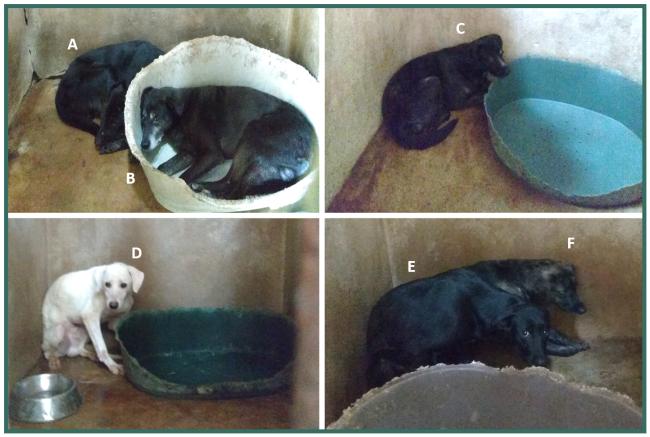Background
Depending on their origin, whether abandoned by their owners (Figure 1A) or born in the streets (Figure 1B), stray dogs have different levels of fear/tolerance towards humans. These dogs are attracted to resources made available through human settings, such as food or shelter, that can be intentionally provided or not. Due to their low tolerance towards humans, encounters with these animals can be dangerous, as they may resort to biting and other defensive/aggressive behaviours. In these situations, the dogs are captured and taken to shelters. Stray dogs tend to permanently stay at the shelters, not only due to safety reasons, as they may remain aggressive, but also because their low sociability contributes to the lack of interest by potential adopters. Previous studies suggest that, with training, some stray dogs can adapt to a human home environment despite an initial state of shyness and fear. However, to date, no one assessed whether the same rehabilitation is possible with highly unsocialized stray dogs.

Meet the Strays
On figure 2 we can see the stray dogs selected for this study, the pictures were taken on the first day of the project, the dogs were very fearful of any human and would crouch and hide in the presence of anyone who would enter the room they were in. These dogs are strays that were born in the streets of Porto, where they were roaming and scavenging until they were captured due to reports of attacks on humans at a city park. Due to this aggressive behaviour history, these animals have been kept since at the shelter. As per the request of the shelter to investigate if either these dogs could be rehabilitated into being more social humans, this project was born, as no literature was found on the matter.
Stay tuned to find out how did these dogs progress and if they did, in fact, improve their sociability towards humans :3

Responsible for this page:
Director of undergraduate studies Biology
Last updated:
06/01/20
